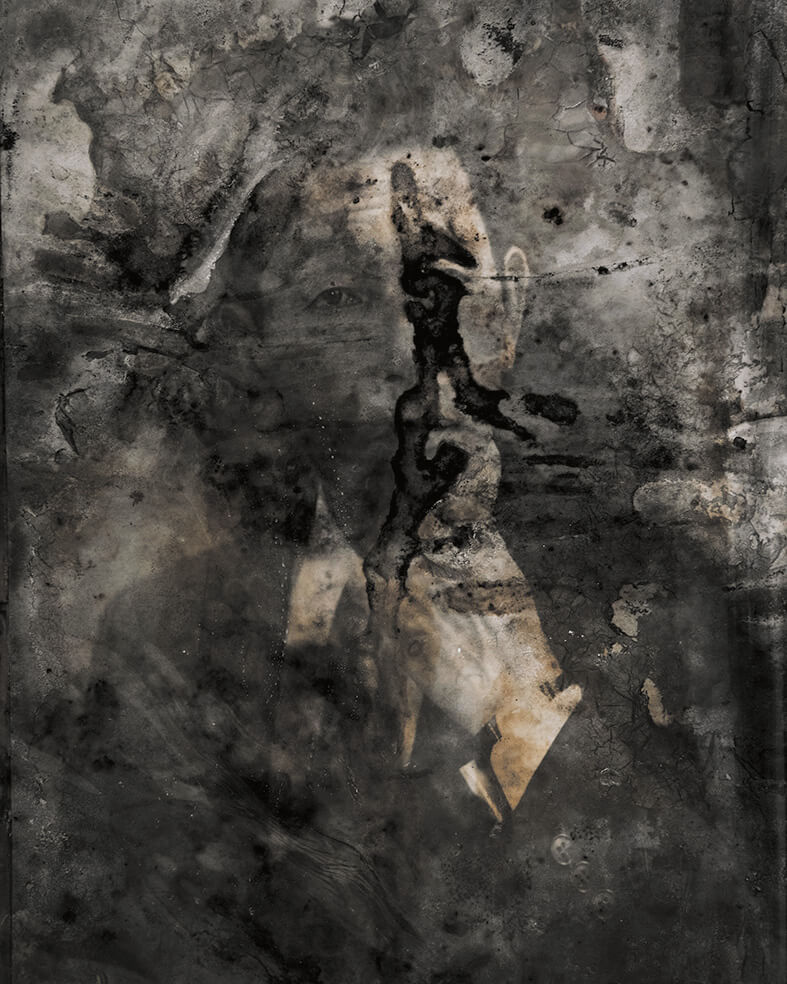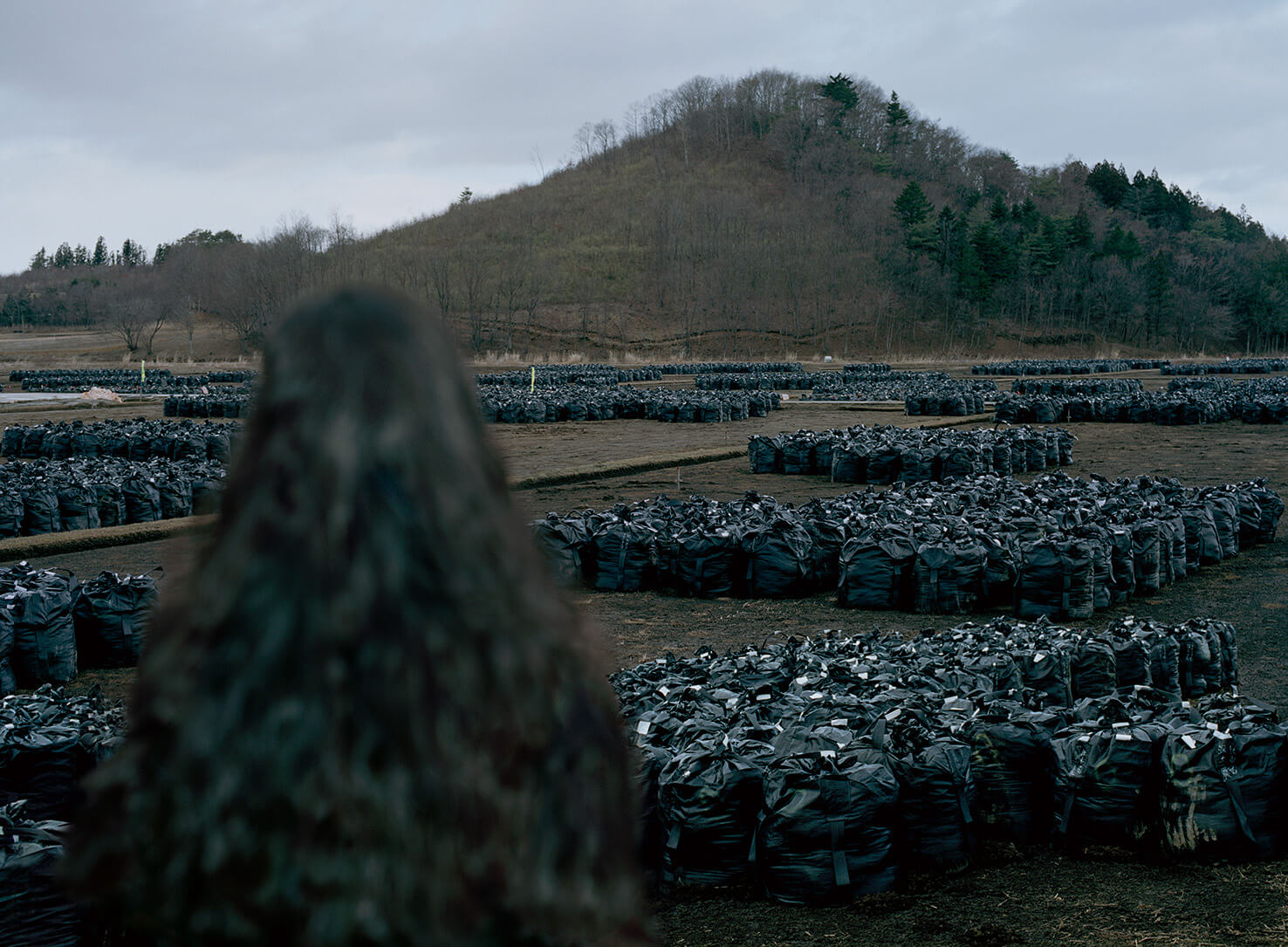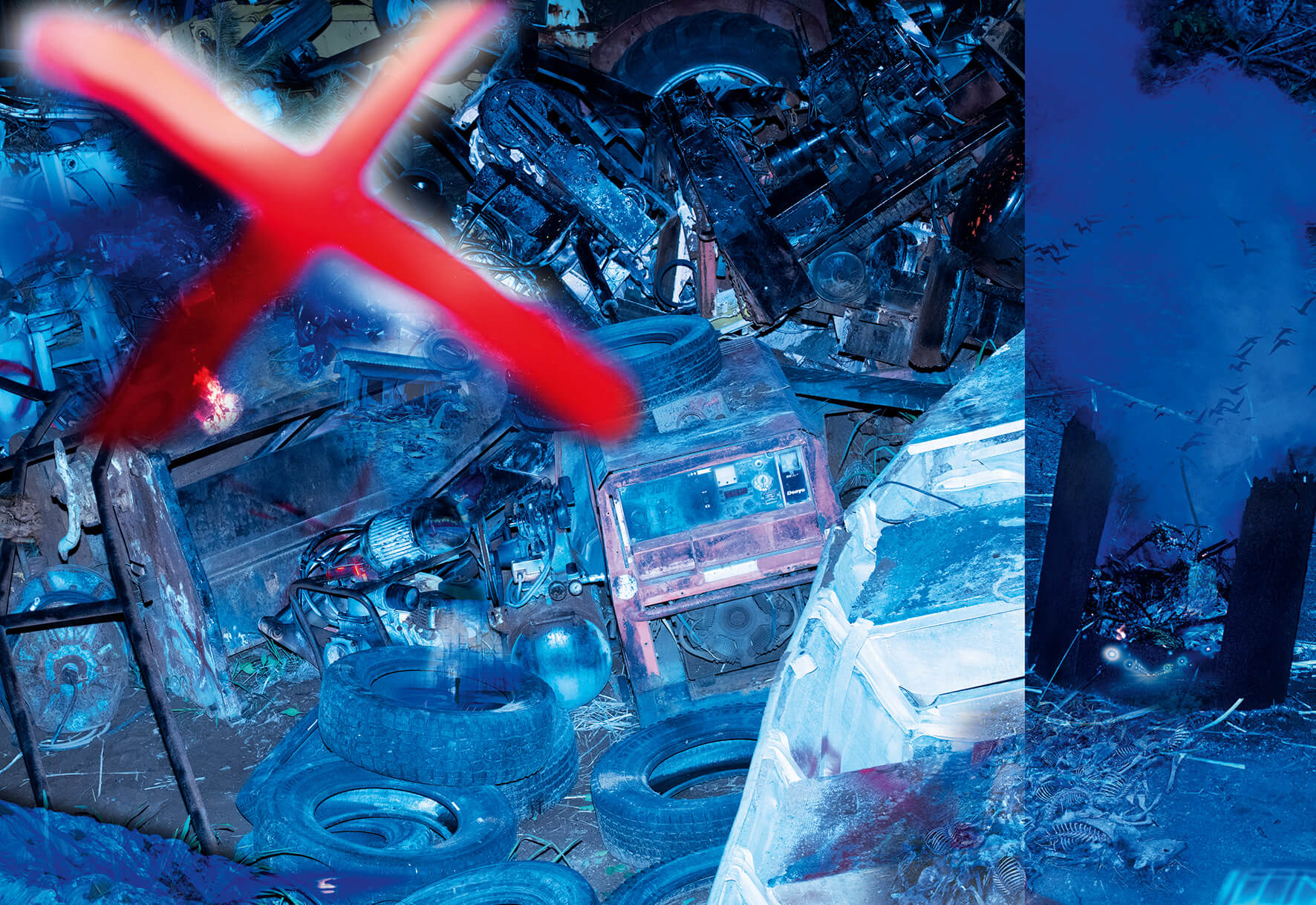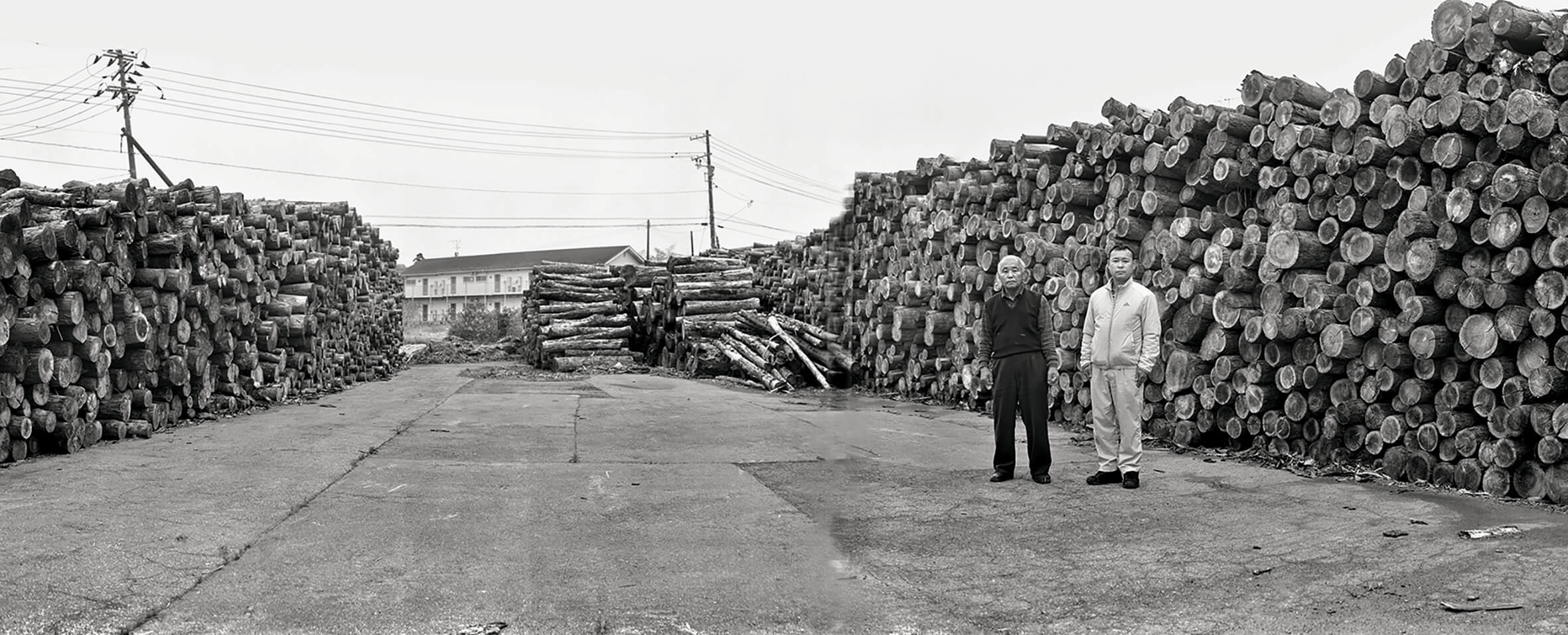Shifting Narratives, Photographers Facing the Cataclysm
The events of March 11, 2011, profoundly altered many artists' practices, prompting them to rewrite their individual and collective stories.

Obara Kazuma ‘Untitled, Fukushima, Japan’, 2011 © Obara Kazuma
When a magnitude 9 earthquake, followed by a tsunami reaching heights of up to 30 meters and the Fukushima nuclear disaster, devastated Japan’s Tohoku region on March 11, 2011, the world was inundated with harrowing images. The overwhelming destruction was documented extensively, with footage of submerged lands flooding screens everywhere, captured by the media and individuals alike. While the devastation of the land was sensationalized and widely broadcast, the incident at the Fukushima nuclear plant was downplayed and kept away from public view. Journalists were only allowed into the Fukushima-Daiichi plant eight months after the disaster.
Amidst this media frenzy, some Japanese photographers felt compelled to document the events as a memorial endeavor. They viewed their work as a foundation for future studies, hoping to help those interested understand what transpired. Nine of these photographers have been curated by Marina Amada and Philippe Séclier for the exhibition Reflection — 11/03/11 Japanese Photographers Facing the Cataclysm, showcased until September 29, 2024, at the Rencontres de la Photographie in Arles (in the Van Gogh space).
The Legitimacy of Artists Representing the Catastrophe
Choosing whom to highlight was challenging. Since 2011, the role of artists and their legitimacy in depicting March 11 has been a subject of debate. In the accompanying book published by Atelier EXB, photographer Naoya Hatakeyama observes a ‘difference between those who have truly experienced a painful event and those who were not present and can only imagine it.’ Having lost his mother and witnessed his hometown, Rikuzentakata, destroyed by the tsunami, Naoya Hatakeyama still believes that ‘art, literature, and creative expression can help overcome the feeling of loneliness experienced by those who think ‘those who haven’t lived through it can’t understand.’’
Marina Amada and Philippe Séclier selected photographers who had not only an intimate connection to the catastrophe—geographically, temporally, or psychologically—but whose approach to imagery and work had been profoundly transformed by the event. This intent is also reflected in the use of the word ‘cataclysm’ in the title, which implies an element of change, unlike ‘catastrophe.’
Only the works of photographer and video artist Hikaru Fujii depict the full scale of the destruction, a deliberate choice by the curators. ‘It was important to give the public an idea of the level of devastation,’ Marina Amada explains in an interview with Pen. ‘But we chose not to include images of afflicted individuals, even though they exist. We selected these photographs because they represented the artists’ work at the time.’
Raising Awareness of the Invisible, A Challenge
Mayumi Suzuki’s work, in particular, bears the mark of the cataclysm. In her series The Restoration Will, she collected portraits of boat builders that her father had wanted to immortalize in their finest attire, far from clichés. These photographs, recovered still stained with mud from her family’s photography studio after losing her parents in the disaster, were a poignant retrieval. Mayumi Suzuki also found her father’s camera—now exhibited in Arles—and used it, without cleaning the lens, to capture the coastline of her hometown Onagawa. She compares the misty images obtained to the vision of the departed.
Some photographers grappled with the challenge of representing intangible forces like radioactivity or social discrimination. Kazuma Obara struggled to convey the impact of a radioactive ocean in his series on surfers in Fukushima. He thus chose to apply seawater to cyanotypes, allowing salt and sunlight to corrode the images uncontrollably, visually representing the threat of radioactivity.
Takashi Arai, meanwhile, chose to photograph and interview young adolescents from Fukushima, capturing their reflections on how the disaster impacted their lives. These poignant audio testimonies are played in the exhibition space, accompanying their portraits made with the daguerreotype technique. This method’s unique longevity of at least 200 years parallels the long-term contamination caused by cesium-137.
Imagery and Accumulation for Reflection on Consequences
‘One photograph alone couldn’t describe what was happening,’ says Marina Amada. ‘That’s why we see an accumulation of images in the work of many photographers like Jun Kanno.’ Jun Kanno photographed bags filled with waste from the decontamination process, stored temporarily, attempting to quantify the volume of affected materials.
Lieko Shiga also captured the new face of the Tohoku region, sometimes resembling an open-air landfill, criticizing the government-driven reconstruction accelerated by capitalist logic. Her neon-colored images of abandoned cars and construction machinery juxtaposed against natural landscapes and human silhouettes convey a surreal atmosphere. This personal interpretation of the disaster’s aftermath is rooted in her experience, having lived in the small village of Kitakama since 2008, which lost 54 of its 350 residents in the disaster.
A fantastical imagination also characterizes Ai Iwane‘s photographs. Residing in Hawaii, she encountered a group of musicians and dancers of Bon Odori, a traditional Japanese dance. In 2011, upon welcoming a hundred people from Fukushima to Maui, she discovered that the origins of Bon Odori songs lay in the affected region. She then traveled there to photograph the new reality using a Cirkut, a panoramic camera long favored by the Japanese immigrant community in Hawaii. She combines these black-and-white images with those taken during the folk dances, dominated by red and blue hues, as testaments to a heritage that endures despite the catastrophe.
A Sense of Urgency Never to Forget
The memory of March 11, 2011, remains unevenly preserved. Not all photographers featured in Reflection — 11/03/11 have received the same recognition in Japan. While some have had their disaster-related works exhibited and acknowledged by major institutions, others, like Kazuma Obara, have yet to have a solo show. Kazuma Obara infiltrated the Fukushima plant as a worker during its decommissioning, at a time when no information was available about the working conditions of the hastily mobilized labor force. His photographs reveal the daily lives of these workers, who, having lost their livelihoods due to the disaster, had no choice but to work for TEPCO, the plant’s operator, despite the frustration this decision caused. This invaluable documentation of the nuclear accident’s reality has only been covered by the foreign press.
According to Marina Amada, the photographers engaged in this memorial work are driven by a desire for change. ‘We said ‘no more Hiroshima, no more Nagasaki,’ and yet we had Fukushima. It’s not so much the devastation we want to remember but the sense of urgency we felt and the need to react and change,’ the curator asserts. ‘As the Japanese government, like others, plans to increase its dependence on nuclear energy, the people of Fukushima and artists committed to these issues are outraged. That’s why we continue to discuss this topic and hope to take this exhibition on the road, including in Japan.’
The exhibition is accompanied by an essential book published by Atelier EXB. It includes the works of three other photographers, Naoya Hatakeyama, Miho Kajioka, and Daisuke Saito, complementing the reflections sparked by the artists showcased in Arles.
Reflection — 11/03/11 Japanese Photographers Facing the Cataclysm (2024), an exhibition organized by Philippe Séclier and Marina Amada as part of the Rencontres de la photographie in Arles, until September 29, 2024, in the Van Gogh space.
Répliques 11.03.11. — Des photographes japonais face au cataclysme (2024), a book directed by Philippe Séclier and Marina Amada, published by Atelier EXB.

Suzuki Mayumi ‘Shipbuilder #11’, 1994 © Suzuki Mayumi Courtesy : original photography by Atsushi Sasaki, ‘The 20th Century Master Craftman’, 1944

Arai Takashi ‘Nobuyasu, then nineteen years old’ ‘Tomorrow's History’, Iwaki, 2017 © Arai Takashi Courtesy PGI Gallery, Tokyo

Kanno Jun ‘Planet Fukushima’, Fukushima Prefecture, 2015-2023 © Kanno Jun

Shiga Lieko ‘Where That Night Leads’, 2022 Tarpaulin © Shiga Lieko

Iwane Ai ‘Hidehiro Asada and his father at their company, Asada Lumber Co.’, Namie, Fukushima ‘Kīpuka’, 2014 © Iwane Ai
TRENDING
-
Hiroshi Nagai's Sun-Drenched Pop Paintings, an Ode to California
Through his colourful pieces, the painter transports viewers to the west coast of America as it was in the 1950s.

-
A Craft Practice Rooted in Okinawa’s Nature and Everyday Landscapes
Ai and Hiroyuki Tokeshi work with Okinawan wood, an exacting material, drawing on a local tradition of woodworking and lacquerware.

-
The Tattoos that Marked the Criminals of the Edo Period
Traditional tattoos were strong signifiers; murderers had head tattoos, while theft might result in an arm tattoo.

-
David Bowie Dressed by Kansai Yamamoto
The English singer was strongly influenced by 'kabuki' theatre and charged the Japanese designer with creating his costumes in the 1970s.

-
‘Seeing People My Age or Younger Succeed Makes Me Uneasy’
In ‘A Non-Conformist’s Guide to Surviving Society’, author Satoshi Ogawa shares his strategies for navigating everyday life.





